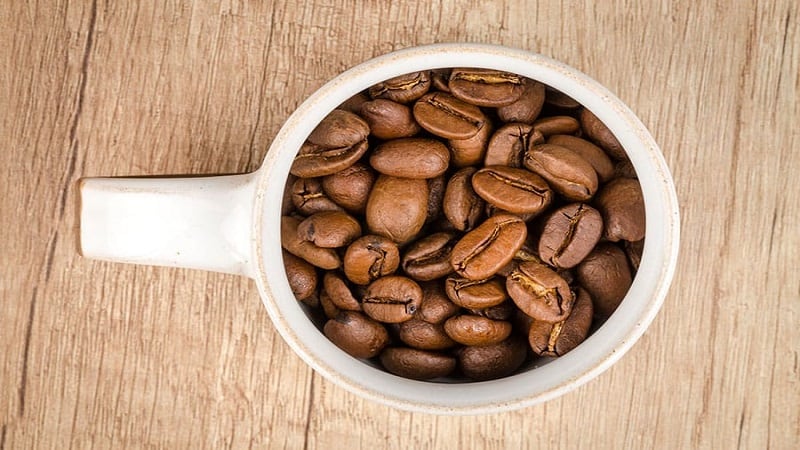Coffee is a drink that has been around for many years. Its popularity only continues to grow because it is so delicious and easy to make. Costa Rica coffee facts are interesting and helpful when you’re considering the best place to purchase your next bag of beans or ground coffee. Here are 5 awesome things you should know about Costa Rica coffee!
See also:
1. Cameroon Coffee: World’s Strongest Coffee
2. Honduran Coffee: An Amazing Cup To Start Your Day
Costa Rica Coffee History
Coffee was an important part of the Costa Rican economy. That’s because coffee became one of their largest exports in 1720 when it first arrived at Martinica and then later on, at the end of the XVIII century, into Costa Rica. Coffee beans were brought there due to their perfect climate found high up in mountains where they can flourish with little outside interference from man-made activities which would ruin them for good!
Coffee is a beautiful, caffeinated beverage that has been an integral part of the Costa Rican culture since it was first introduced. Although coffee only makes up 1% of the world’s production, the country produces some amazing quality beans! Global brands like Starbucks are recently starting to invest in local plantations due to how perfect all these conditions make for high-quality crops!
Costa Rican coffee has won plenty of international contests and certifications. In Japan, the winner of the world’s best cup used Costa Rican to make his winning brew because he claimed that it was better than any other kind out there!
Costa Rica Coffee Growing Regions
Costa Rica has the perfect climate for growing delicious coffee. More than 80% of Costa Rican farms are located at high altitudes, on volcanic soil, and in an area with year-round warm weather that is ideal for harvesting those beautiful beans!
Different regions produce coffee beans with their own distinct flavors. Some main ones are:
- Guanacaste
- West Valley
- Turrialba
- Orosi
- Tarrazu
- Brunca
- Tres Rio
- Central Valley
Costa Rica is known for its coffee, but the most prestigious of them all come from Tarrazu. This region produces up to 35% of Costa Rican’s total output and Tarrazu’s La Minita, in particular, has a worldwide reputation that any true connoisseur would know about.
Coffee Processing Methods Used In Costa Rica
There are three main methods of processing coffee beans: washed, natural, or honey.
Washed
The watery method of coffee production is the most popular in use around the world. Coffee cherries are put into a wet mill, and machines then forcefully remove their fruit to produce clean tasting coffee with mild flavor notes like honey or chocolate that retain some sweetness from its origins as berries.
Naturally-processed
It is good to use this method because it doesn’t cost as much and coffee will have a syrupy body with charterers of berries, citrus, and grape.
Honey processing
The process of honey processed coffee is very unique. In this method, only a small part of the fruit/bean is removed and left to dry on top, preserving sweetness in contrast with other processes that remove all parts from the bean such as drying or sun-drying methods. The inner layer will still have some mucilage on it so don’t be surprised if you find sweet notes like honey!
What Makes Costa Rica Coffee Unique

Growing conditions
The soil and the climate in Costa Rica are perfect for coffee plantations, so it makes sense that the government encouraged people to grow their own. They gave them plants and tax breaks as a way to lift farmers out of poverty.
The volcanic soils of Costa Rica are fertile and rich, making this country the perfect place for coffee cultivation. The early farmers must have been surprised at how well their crops grew in such an inhospitable environment; they probably had no idea that it would fuel a rise to prominence on Earth!
Thoughts on flavor
After being introduced to a new machine that can be programmed with different flavors, Costa Rica coffee has taken on an exciting and diverse flavor palate. From spicy chocolaty notes to fruity undertones of pomegranate or honeydew melon- it’s not plain anymore!
Expanding on what was originally found in Costa Rican cuisine, many farmers have made it their passion to create new and exciting tastes for tourists who visit this beautiful country every year!
Emphasis on quality
The small, but mighty Costa Rican coffee industry is proud of their high-quality beans and the intense work they put into optimizing every square inch. They make sure to use land in a way that optimizes it as much as possible: by planting rows close together so harvest time isn’t wasted on walking through fields or over large distances; maximizing space with trees planted for shade while still producing enough fruit to sell at markets – all this shows just how hardworking these farmers are! With limited resources, you’ve got to try your best.
Where To Buy The Best Costa Rica Coffee
Costa Rican beans are one of the most popular types available. The roasting process gives them a rich and smoky flavor, perfect for those looking to add some spice to their morning cup of coffee. Try these four local distributors if you want your brew to be on point!
- Cafe 1820
- The Volcanica Coffee Company Costa Rican Peaberry
- Sweet Maria’s Green Costa Rican Range
- ‘Fresh Roasted’ Costa Rican Beans
FAQs
Why is Costa Rica Coffee so good?
Costa Rica is known for its top-quality coffee with great versatility, resulting from its ideal terrain and growing conditions (1). With its volcanic soil, high altitudes, and good climate, the coffee here is high quality with good acidity.
Does Starbucks use Costa Rican coffee?
To balance the vibrant notes and accentuate the brightness Costa Rican coffees contribute, we blended in beans from Latin America, creating this distinctly elegant cup with a soft, lemony sweetness and smooth cocoa texture.
Conclusion
The Costa Rican coffee industry is booming. The country has the best Arabic coffee in the world and exports a lot of it to all corners of the globe, thanks to its perfect growing conditions!

Felix Hendricks is a skilled barista with over 12 years of experience. He excels in crafting coffee and has a strong foundation in coffee machine mechanics. Felix holds a Coffee Machine Maintenance Certification from the Coffee Equipment Technical Institute, showcasing his ability to diagnose and repair coffee machines. He’s also worked as a quality control specialist, selecting premium coffee beans for optimal flavor. Felix has a diverse work history, including stints at renowned coffee spots like Café Euphoria & Starbucks. His expertise in both brewing and machine maintenance makes him a respected figure in the coffee industry.
